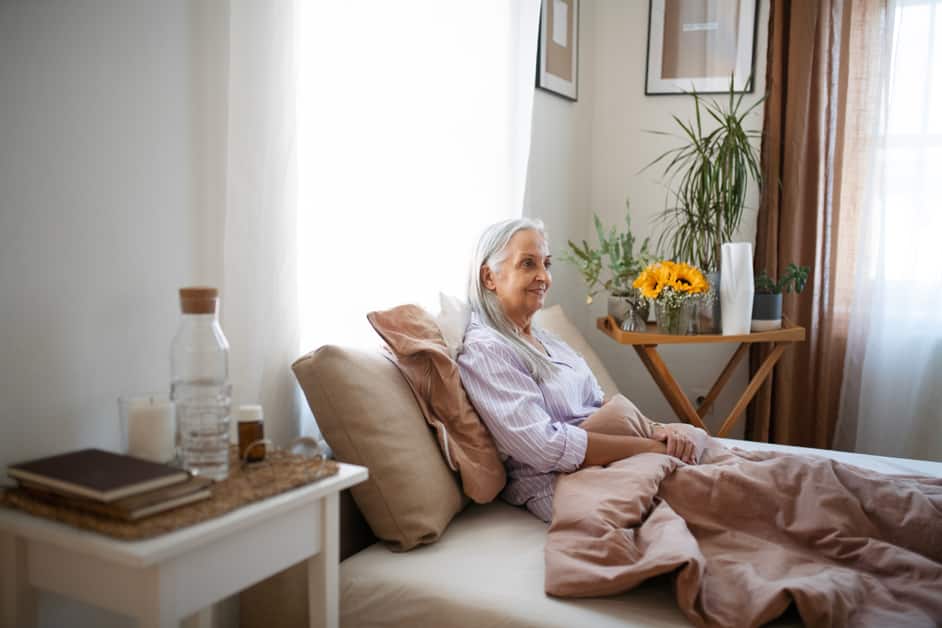Introduction
Knee pain is a problem that affects many. It can be annoying, or it can be a major issue. No matter what, it can stop people from being active.
The best way to avoid knee pain is prevention. Rest and recovery are a must after tough workouts. Taking regular rest days will help the body heal and stay strong. This guide provides tips on how to structure rest days for an active lifestyle. This will keep you healthy and happy, with a low risk of knee or joint pain.
Rest & Recovery Strategies
Rest & recovery are essential for recovering from an injury and preventing knee pain. Here are some helpful strategies:
- Rest!
- Eat nutritious meals.
- Participate in activities that don’t worsen the pain.
These steps can lead to a successful recovery. Let’s look at them more closely.
Ice & Heat Therapy
Ice and heat therapy are two popular forms of rest and recovery. Ice acts like a numbing agent for inflammation, while heat increases circulation and relaxes muscles. Alternating the two can help get back to activity level quickly.
When deciding, consider pain severity, injury, stage of healing, environment, etc. Ice should not be used longer than 20 minutes to avoid damage. Ice massage can also be used by rubbing a covered ice cube until numb feeling is achieved. Moist heat works best for muscles, dry or infrared saunas help with sleep after a workout.
Compression & Elevation
Compression and elevation are important for knee pain prevention. Compression reduces swelling and elevation reduces discomfort. Use braces, bandages, crutches or ice packs for compression. Make sure the fit is comfortable and that you don’t leave them on for too long.
When resting or sleeping, put an extra pillow or foam wedge beneath your thigh to take pressure off the lower knee joints. Fluid drainage can reduce inflammation and soreness. Elevate your leg above heart level during recovery, but not too much!
Massage & Stretching
Massage and stretching can help with discomfort and improve flexibility. There are various massage types, like manual therapy and trigger point massage. These techniques help the joint move normally and can reduce swelling.
Stretching is vital to maintain normal knee movement and avoid injury. Stretch before and after exercise. This can decrease stress on the muscles around your knees.
Calf, quadriceps, hamstring, groin and IT-band stretches may help reduce pain, swelling and tension. But be careful not to overstretch. Instead, hold each stretch for 10-30 seconds in a level of discomfort that doesn’t hurt.
Sleep & Nutrition
To prevent knee pain, focus on sleep and nutrition:
- Sleep: Get quality sleep each night, 7-9 hours! Stick to a regular sleep schedule. Also, avoid caffeine & screens late at night. Power naps, too!
- Nutrition: Eat fresh fruits & veggies, for those phytonutrients. Have protein sources like fish, poultry, and lean cuts of meat. Processed foods and refined sugars? Avoid ’em! Eat healthy for knee pain prevention.
Exercise & Activity
Activity and exercise are vital to avoid knee pain. They can make your knee stronger, more flexible and good for your joint health. Doing regular activity makes your knee joints flexible, reduces stiffness, and improves your mobility and strength.
However, rest and recovery are just as important. This guide has lots of tips for rest and recovery which will help reduce knee pain and avoid getting hurt.
Strength Training
Strength training is a must for any exercise routine. Especially for those who want to stay mobile and avoid knee pain. It focuses on building strength in the muscles around the knee. These include the quadriceps, hamstrings and calf muscles.
To best target individual muscle groups, go beyond basic upper and lower body exercises. Doing strength-training exercises regularly helps protect your knees from overuse injuries and ease pain related to arthritis. Good exercises are those that focus on overall balance. Strengthen all the muscles in the front and back of your legs, and on your hips, while improving flexibility.
Start slow, and use proper form to prevent injury. Examples of suitable exercises include:
- Lunges
- Squats
- Single-leg balance holds
- Calf raises
- Leg presses
- Leg extensions
- Step ups
Cardiovascular Exercise
For body health and fitness, aerobic exercise is key. Popular ones include running, cycling, swimming, rowing and stair climbing. For knee pain and injury prevention, low-impact activities like water aerobics are best. Cycling is a good option too, as it puts minimal strain on the joints, unlike running. Resistance training also helps build muscle strength around the knee joint. Light weights decrease impact forces and create healthy muscles that support the knee.
Lastly, yoga and Pilates are great for those with chronic knee pain. They focus on low-impact poses to strengthen joints and stretch tight muscles. Plus, they offer relaxation techniques to reduce stress levels and inflammation – a common cause of knee pain.
Flexibility Training
Flexibility training is key for successful knee pain prevention. It reduces the risk of injury and can make you feel relaxed.
There are many ways to begin. It depends on your current flexibility. Start off slowly. Don’t commit too hard or too long. Warm up with light activity. Engage your muscles in deep stretches.
Perform flexibility movements at least two times a week:
- Basic stretches like downward-facing dog, child’s pose, and cobra pose.
- Dynamic stretching using momentum to return from static holds.
- Static holds, remaining still in favoured positions.
- Myofascial release to reduce joint pain.
- Foam rolling, a form of self-myofascial release. Firm, yet gentle pressure. Provide deep tissue massage, improving range of motion.
Other Considerations
Rest and recovery are important for avoiding knee pain and helping with existing pain. Yet, there are more aspects to think about for a prevention plan. This guide will explore lifestyle, nutrition, stretching, and strengthening. All of these can affect knee pain and must be taken into account for long-term relief.
Posture & Ergonomics
Posture and ergonomics can have a great impact on preventing and treating knee pain. Poor posture can cause muscle imbalances, adding pressure to the knees which leads to pain. For healthier joints, maintain good posture. Utilize ergonomic measures like adjustable seating, breaks from sitting or standing in one position, and comfortable footwear.
When at a desk or workstation, adjust it to your height. Rotate around if you have a swiveling chair. Make sure your monitor is facing you, not making you twist your neck or body. Adjust keyboards so your wrists are straight down by your sides, not lifted up towards your shoulders.
Take breaks for stretching to reduce stress on muscles around joints. Be aware of any uncomfortable positions or sensations while engaging in physical activities to prevent further knee pain.
- Adjust your desk or workstation to your height.
- Rotate around if you have a swiveling chair.
- Make sure your monitor is facing you, not making you twist your neck or body.
- Adjust keyboards so your wrists are straight down by your sides, not lifted up towards your shoulders.
- Take breaks for stretching to reduce stress on muscles around joints.
- Be aware of any uncomfortable positions or sensations while engaging in physical activities to prevent further knee pain.
Injury Prevention
Injury prevention is key for avoiding knee pain. Listen to your body and know when activity is too much. Pushing your limits can lead to long-term discomfort or injury. Here are some tips to help:
- Increase activity gradually and take rest days.
- Cross-train with activities that strengthen knee muscles and ligaments.
- Squats, lunges and other exercises designed for knee pain prevention.
- Make sure shoes fit well and stretch before physical activity.
- Start workouts with light cardio.
- Modify activities if pain occurs.
Proper form is vital. Avoid valgus collapse (knees bending inward). If you need help, work with a physical therapist to get the correct form.
Mental Health
The significance of mental health for a successful knee injury recovery is immense. Recovery can be a long and challenging process, with frustrations and setbacks. This can cause emotional strain leading to depression or over-training. Pay attention to how you feel and know that help is available if needed.
Set realistic goals for recovery and allow enough time for rest. Practice relaxation techniques such as mindfulness or yoga to manage stress and keep an overall balanced outlook. Medical professionals like physiotherapists may offer advice on managing psychological aspects, if desired.
Make sure to incorporate social activities. Even with rest for the knee rehabilitation program, staying connected to others keeps social wellbeing positive and prevents feelings of isolation or depression.
Conclusion
To wrap it up, rest and recovery are key for avoiding knee pain and recovering faster if you do encounter it. Keep your body in balance with stretching, strength training, and cardio exercise. Your body knows best, so listen to it for sustained physical health.
This guide offers tips for managing pain without too much disruption. Doing these activities often not only handles current symptoms, but also prevents future injuries. Prevention is always better than a cure!
Frequently Asked Questions
Q: What is the best way to rest and recover from knee pain?
A: The best way to rest and recover from knee pain is to focus on low-impact activities that don’t put too much stress on your joints. This can include swimming, cycling, and using an elliptical machine. Additionally, stretching and foam rolling can help to reduce pain and improve flexibility.
Q: What foods should I avoid to prevent knee pain?
A: To reduce your risk of knee pain, it’s important to eat a well-rounded and balanced diet. Certain foods may increase inflammation, such as processed foods, sugar, and red meat. It’s best to limit these foods and focus on eating foods that are anti-inflammatory, such as green leafy vegetables, nuts, and fatty fish.
Q: What exercises can I do to prevent knee pain?
A: Strengthening the muscles around the knee can help to improve stability and reduce your risk of knee pain. Exercises such as squats, lunges, and step-ups are great for strengthening the quads, hamstrings, and glutes. Additionally, core exercises such as planks and crunches can help to improve overall stability.





